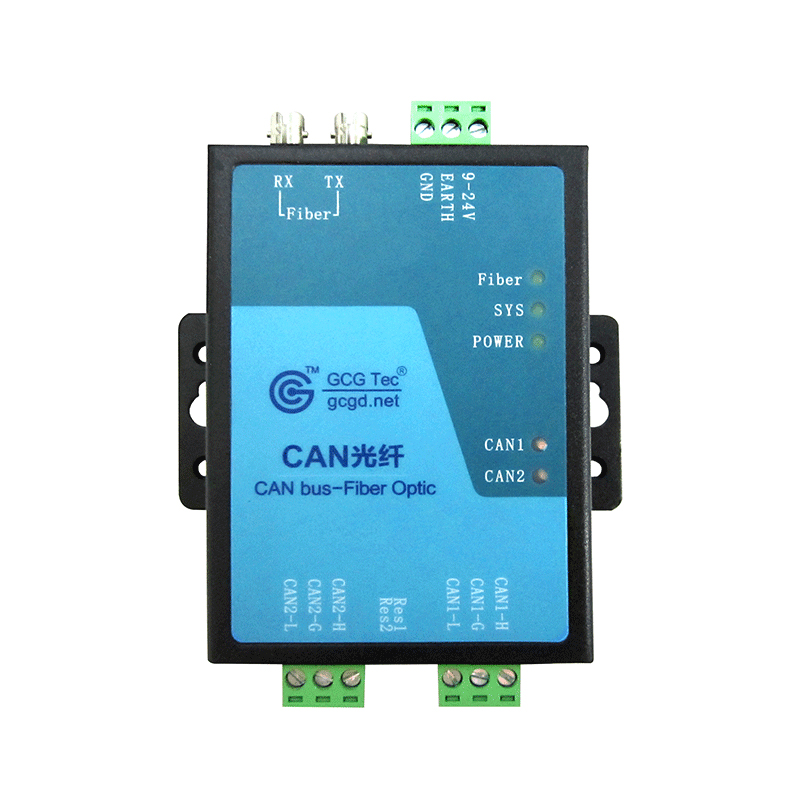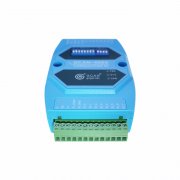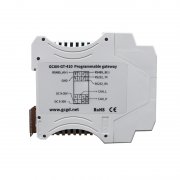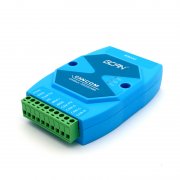A long-distance CAN bridge: optical fiber to CAN modules
GCAN-208 series are optical fiber to CAN modules. It can convert the CAN bus data into optical signals transparently and non-destructively, and then analyze the optical signals into CAN bus data transparently and non-destructively. GCAN Tech uses a unique bus signal conversion technology to convert the conversion time between CAN data and optical signals to microseconds, thus ensuring real-time communication, so GCAN-208 optical fiber to CAN modules can support any CAN bus communication protocol. Such as: CANopen, SAE J1939, DeviceNet, NMEA2000 and so on.
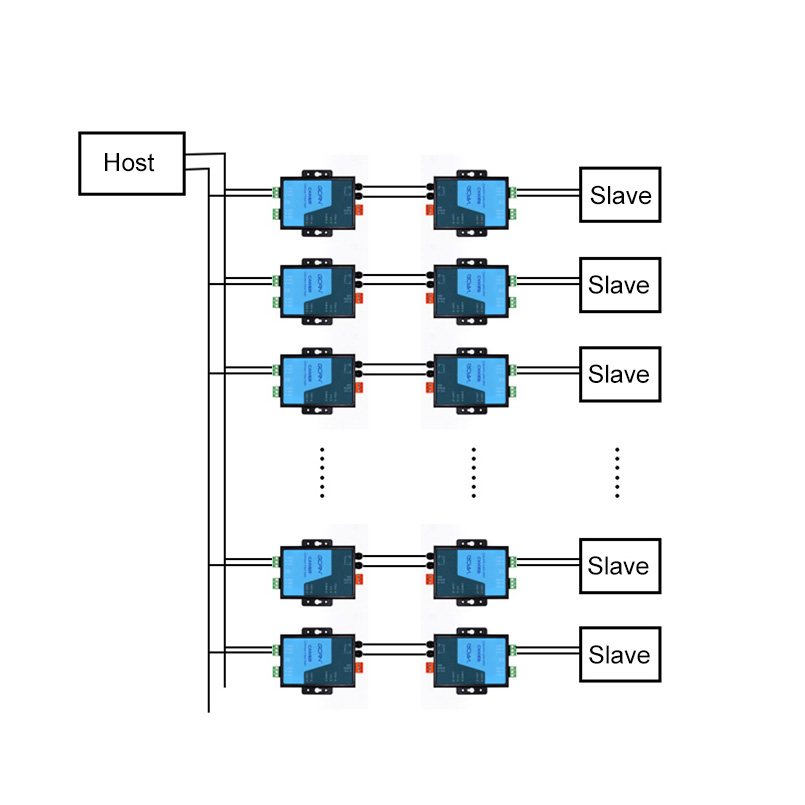
Figure 2 GCAN-208-1 module (single-channel optical dual-channel CAN)
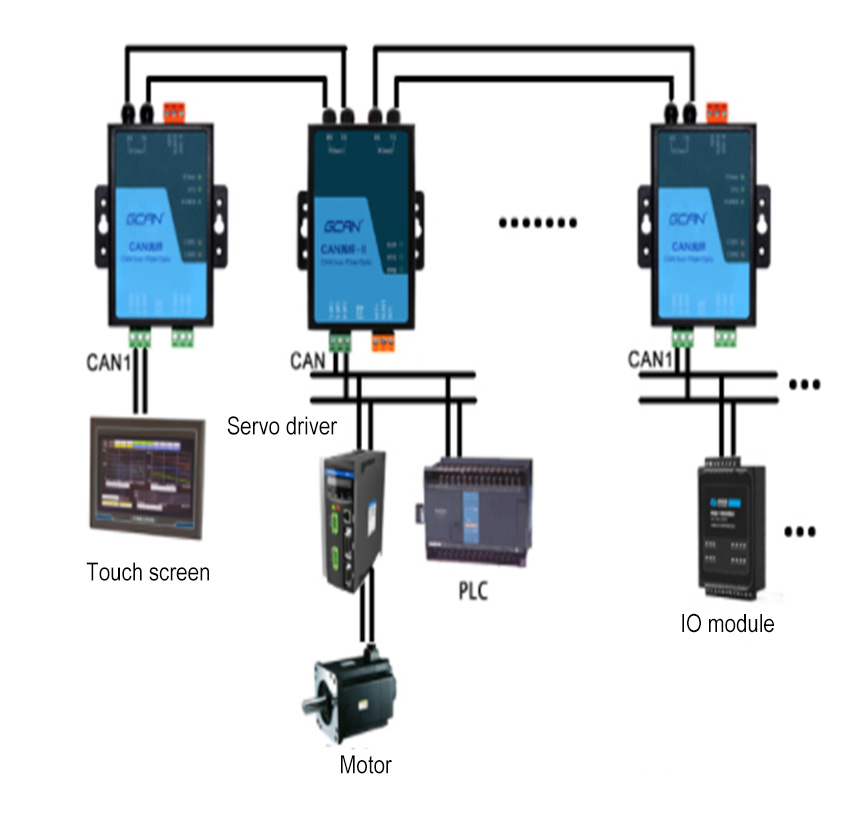
Figure 3 GCAN-208-2 module (dual-lane single-channel CAN)
If you find the GCAN-208 series optical fiber to CAN modules can satisfy your requirements, there are 3 points you should pay attention when purchasing such equipment:
1. Be sure to determine the baud rate of CAN first. If you don't know the baud rate, the USBCAN can helps.
2. Whether each CAN node in the network needs to be cascaded, if it needs to be hand-in-hand cascaded, equipment with two-way fiber should be used.
3. The interface form of the field fiber line should be determined in order to select the corresponding fiber module.
If the upper points couldn't be determined, you can contact GCAN for help to choose the optical fiber to CAN modules.
Tel: +86 13609896275.
Email: sygckj@gmail.com
By using the GCAN-208 series optical fiber to CAN modules in pairs, you can easily extend the CAN bus communication distance and effectively eliminate long-distance communication interference, which can prevent the bus from being damaged by electromagnetic interference, ground loop interference, lightning strikes, etc. So that they have been widely used in wind power generation, fire engine, smart factory transformation and other occasions.
GCAN-208 series optical fiber to CAN modules have two types of products: GCAN-208-1 module (single-channel optical dual-channel CAN) device can extend the communication distance between two CAN buses, and can be used for one-to-one communication between the host and the extension, such as Figure 2 shown.
GCAN-208 series optical fiber to CAN modules have two types of products: GCAN-208-1 module (single-channel optical dual-channel CAN) device can extend the communication distance between two CAN buses, and can be used for one-to-one communication between the host and the extension, such as Figure 2 shown.

Figure 2 GCAN-208-1 module (single-channel optical dual-channel CAN)
The GCAN-208-2 module (dual-lane single-channel CAN) has two independent fiber interfaces that can be cascaded between a pair of GCAN-208-1 devices. For example, if there are three or more devices that need to be connected to the network, the GCAN208-1 and the GCAN-208-2 optical fiber to CAN module can be used to connect hand in hand, as shown in Figure 3.

Figure 3 GCAN-208-2 module (dual-lane single-channel CAN)
If you find the GCAN-208 series optical fiber to CAN modules can satisfy your requirements, there are 3 points you should pay attention when purchasing such equipment:
1. Be sure to determine the baud rate of CAN first. If you don't know the baud rate, the USBCAN can helps.
2. Whether each CAN node in the network needs to be cascaded, if it needs to be hand-in-hand cascaded, equipment with two-way fiber should be used.
3. The interface form of the field fiber line should be determined in order to select the corresponding fiber module.
If the upper points couldn't be determined, you can contact GCAN for help to choose the optical fiber to CAN modules.
Tel: +86 13609896275.
Email: sygckj@gmail.com


